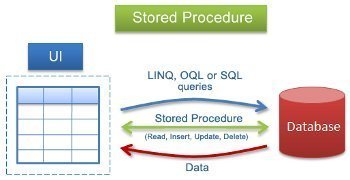Stored Procedure
A stored procedure is, in simplest terms, a command. Stored procedures are used to perform a wide variety of tasks on a computer and can be pre-programmed with any number of parameters or variables. While stored procedures are always used to interact with a database, they can be used for many different applications, such as use in employee databases, restaurant or retail records, or even in regular websites.
How a Stored Procedure Works
A stored procedure can be created by using any standard programming language and database, such as Java DB or MySQL. A stored procedure would be a term or phrase that is used to conjure a specific set of data. For example, the stored procedure “SHOW_SUPPLIERS” could be used to conjure names of material suppliers for a retail outlet or restaurant. The user could also include specific parameters, such as location or price, in order to narrow the returned data set to a small list of ideal suppliers.

Applications
In addition to the above example, stored procedures can be used to conjure data for many different reasons. For example, an employer may use a stored procedure for his/her database in order to lookup information about his/her employees, hire employees, fire employees, or promote employees. Likewise, an online store could use stored procedures in order to locate specific products based on the category they are in or their relative price range.
Advantages
Stored procedures are advantageous because they allow users to search for specific information based on predetermined parameters and can be used for a wide variety of applications. Stored procedures are also advantageous because they allow users to determine their own parameters and specify how data is returned in search results. Because of this, stored procedures not only provide users with a practical method of searching for data, but also allow for customization of those searches.


Comments - 2 Responses to “Stored Procedure”
Sorry but comments are closed at this time.